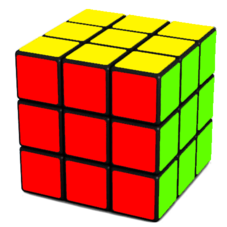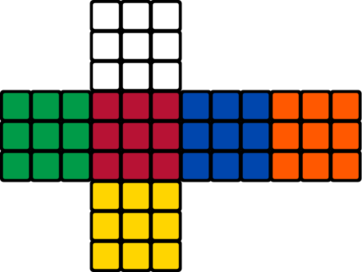This project is a comprehensive exploration of solving the Rubik's Cube puzzle through the creation of a computer program. We've successfully built a Rubik's Cube solver by breaking down the problem into manageable components, implementing algorithms, and utilizing object-oriented programming principles.
1.1.mp4
2.1.mp4
We successfully transformed the Rubik's Cube, a real-world object, into a digital representation that the computer can understand. This involved creating data structures and classes to capture the cube's state and manipulate it programmatically.
To tackle the complete Rubik's Cube solver, we divided the problem into smaller sub-problems. This approach allowed us to create basic models and controllers, such as Rubik's cube representations and solvers, which could be further extended and refined.
We applied essential concepts of object-oriented programming, including:
- Defining classes and creating objects.
- Using virtual functions and abstract classes to enable polymorphism.
- Leveraging inheritance to create specialized cube representations and solvers.
- Overloading operators for intuitive cube manipulation.
We successfully built and implemented path-finding algorithms, including BFS (Breadth-First Search), DFS (Depth-First Search), IDDFS (Iterative Deepening Depth-First Search), and IDA* (Iterative Deepening A*). These algorithms proved instrumental in solving the Rubik's Cube and have broader applications in AI.
We developed a deep understanding of heuristic search algorithms, such as A* and IDA*, and how to construct pattern databases to provide heuristic estimates for optimizing the Rubik's Cube solving process.
Throughout the project, we constructed practical skills and concepts, including:
- Understanding how
unordered_map<>functions with custom objects. - Crafting custom hash functions for data structures.
- Utilizing bit manipulation to store information efficiently.
- Implementing file I/O for saving and loading cube states.
- Grasping the concept of "black boxing," where we define inputs and anticipate specific outputs from a black box system, as demonstrated in our Permutation Indexer.
The project is structured into various components, including:
-
RubiksCubeSolver: The core Rubik's Cube solver that leverages the algorithms and data structures developed during the project. -
PatternDatabases: A module for constructing and managing pattern databases used in heuristic searches. -
Algorithms: Implementation of path-finding algorithms, including BFS, DFS, IDDFS, and IDA*. -
Utilities: Utility functions for custom data types, file I/O, and more. -
Cmake: This has been used to configure and manage the build process. The initial setup of CMake was facilitated through Jet Brains's "Clion" IDE.However, for those who wish to work with the project in different Integrated Development Environments (IDEs) like Visual Studio Code or need to integrate it into various scenarios, you can make use of the following files:1. CMakePresets.json 2. CMakeUserPresets.json
To utilize or contribute to this project, follow these steps:
- Clone the repository to your local machine.
- Explore the project's structure and the specific components.
- Study the source code and documentation to grasp the implementation details.
- Experiment with solving the Rubik's Cube using the provided solver and algorithms.



